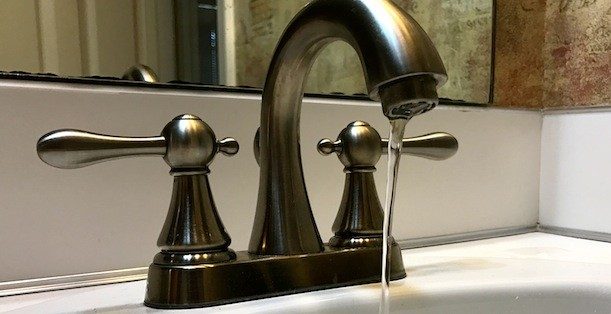Fort Smith utilities boss says the city is making progress on water leaks
by February 11, 2020 5:15 pm 1,012 views

Only a few months after saying little progress had been made in repairing more than 700 water leaks around the city, Fort Smith Utilities Director Lance McAvoy told Fort Smith city directors that about 70% of the city’s reported leaks have been fixed.
McAvoy reported at the board’s study session Tuesday (Feb. 11) that as of Feb. 4, the city only had 212 reported leaks left to repair. There are 135 sites where the leak has been repaired, but there is still work to be done on site restoration.
At a Feb. 5 board meeting, directors approved hiring 10 additional employees for the water and sewer department who would join the 17 department employees to create nine three-person teams working to fix the 700 leaks in the city’s water system as well as taking care of new leaks reported to the department. The goal was to be caught up on the leaks in 18 months, then utilities director Jerry Walters told the board.
Nine months later, McAvoy told the board the city still had around 700 leaks needing repair. At that time, the city had not received the $350,700 worth of additional equipment, essential to build the nine teams, the board approved through a resolution Aug. 20. The city also had not filled all 10 of the new positions.
Since November, some of the new equipment has arrived and more employees have been hired, McAvoy said. This, along with crews working seven days a week except during holidays, has helped the city begin to get a leg up on the leaks.
“Those numbers indicate less new leaks reported than what we repaired. We actually caught up by 48 leaks in October, 22 in November, 41 in December and 43 in January,” McAvoy said, regarding a handout he gave directors. “This means we are gaining on the leak issue.”
Total leak repairs completed those months were 73 in October, 42 in November, 65 in December and 69 in January. That does not add up to 500 — the difference between the amount of leaks on the city’s books in November as compared to the number outstanding now. That is because over the past few months utility department workers have gone out and “put eyes on every leak on the list.” In doing so, they found many leaks had actually been repaired, but the work orders had never been closed, McAvoy said.
“About a year ago, we went through our work orders with an internal audit and found several that had never been closed out. Apparently, we didn’t fix the problem because that problem still exists. We went from a whole bunch down to just over 200. We are actually looking much better that what we were in November,” he said.
After completing the backlog of leaks, the teams will continue to repair new leaks as well as turn toward a proactive system of preventative maintenance on the water system, which will include valve replacements, meter replacement and unidirectional flushing of the 720 miles of water lines, McAvoy said.
“We have worked reactionary for too long. For every dollar you spend being proactive, you save $4 spent reactionary,” he said.
